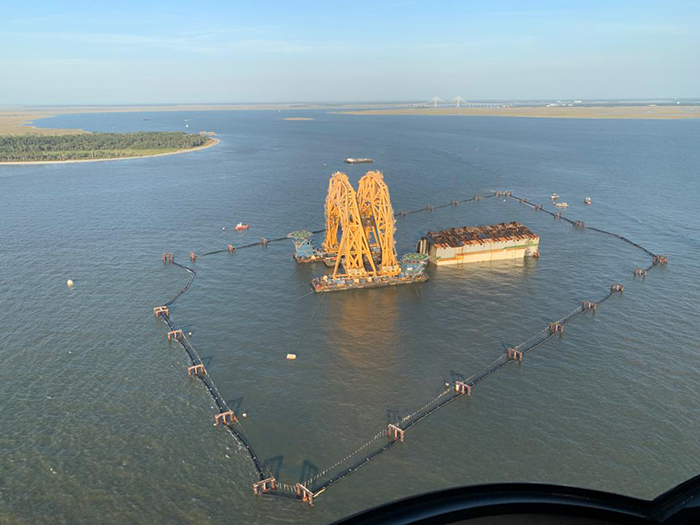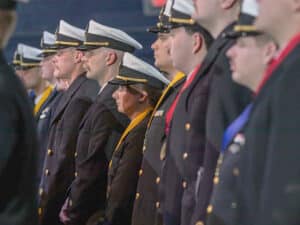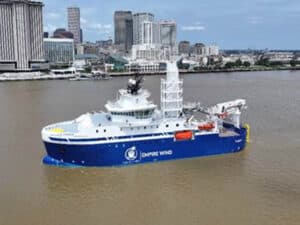
Golden Ray: Cutting equipment good to go, but will lugs hold?
Written by Nick Blenkey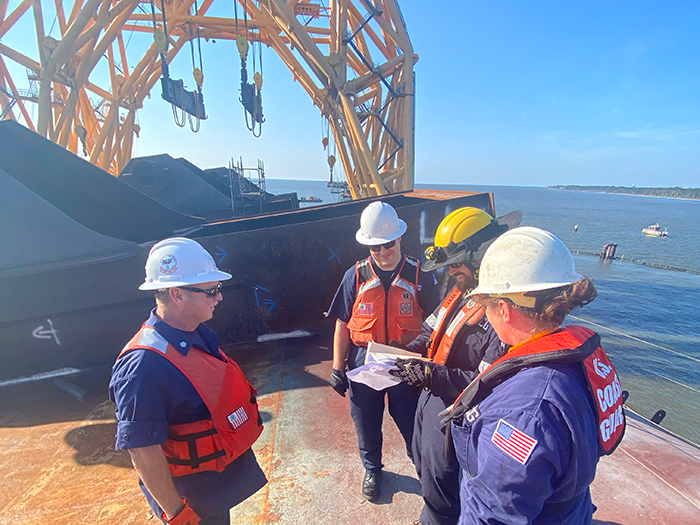
From left, U.S. Coast Guard Cmdr. Efren Lopez, federal on-scene coordinator for the response accompanies Lt. Ben McKeathen and Andrew Lawrence of the Salvage Engineering Response Team (SERT) and Cmdr. Heather Mattern of U.S. Coast Guard Sector Charleston during an inspection of the topside of the Golden Ray wreck on May 25. [St. Simons Sound Incident response photo]
As they continue to assess the impact of the fire that broke out within the Golden Ray wreck on May 14, responders say the equipment being used to cut up and remove the remains of the capsized car carrier—including the massive heavy lift vessel VB-10000 — is fully operational.
WILL LIFTING LUGS HOLD?
What is still being assessed is the integrity of the giant lugs that VB-10000 uses to lift sections of the capsized car carrier following cutting operations. A worst case scenario would be if the lugs parted company with a wreck section during lifting operations.
The St. Simons Sound Response unified command says that a preliminary engineering analysis confirmed that the lugs and structural members of the next section of the wreck set for removal, Section Three, are in satisfactory condition. However a complete analysis may prescribe additional reinforcement or repair measures to ensure safe lifting operations.
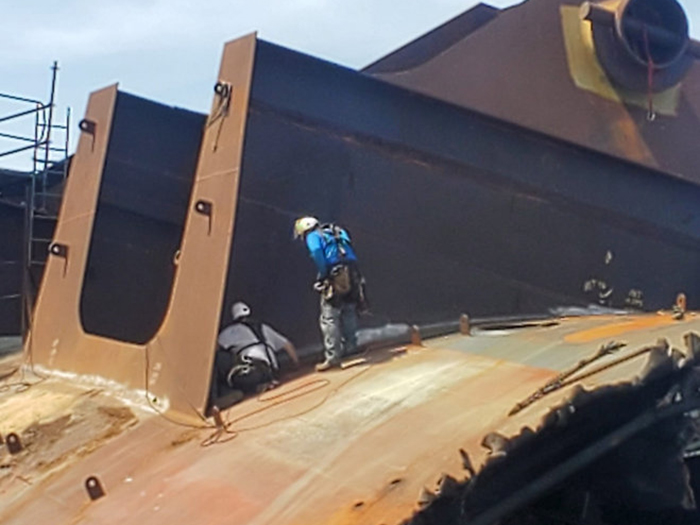
Once the testing is complete on Section Three, wreck removal personnel will make final preparations to recommence cutting operations to separate the section from the remainder of the wreck.
Naval architects and response engineers will continue to assess the structure of the remaining Golden Ray wreck and the lifting lugs welded to the top of the wreck to determine optimal lifting weights for each section. Their calculations combine data from previous lifts along with data collected from non-destructive testing and metallurgical analyses of the topside of the wreck and each lifting lug. If any section exceeds the recommended lifting weight, weight-shedding operations will commence.
FOCUS ON SAFETY
“We are confident that we can safely resume cutting operations after carefully assessing all of our equipment and the wreck itself,” said U.S. Coast Guard Cmdr. Efren Lopez, federal on-scene coordinator. “We are completely focused on our goal of safely removing the remainder of the Golden Ray while safeguarding the surrounding environment and the shipping channel throughout the process.”
Rope access technicians and divers have completed pre-cutting on remaining sections of the wreck which included drilling additional drain holes and removing plates of exterior steel along projected cut grooves.
